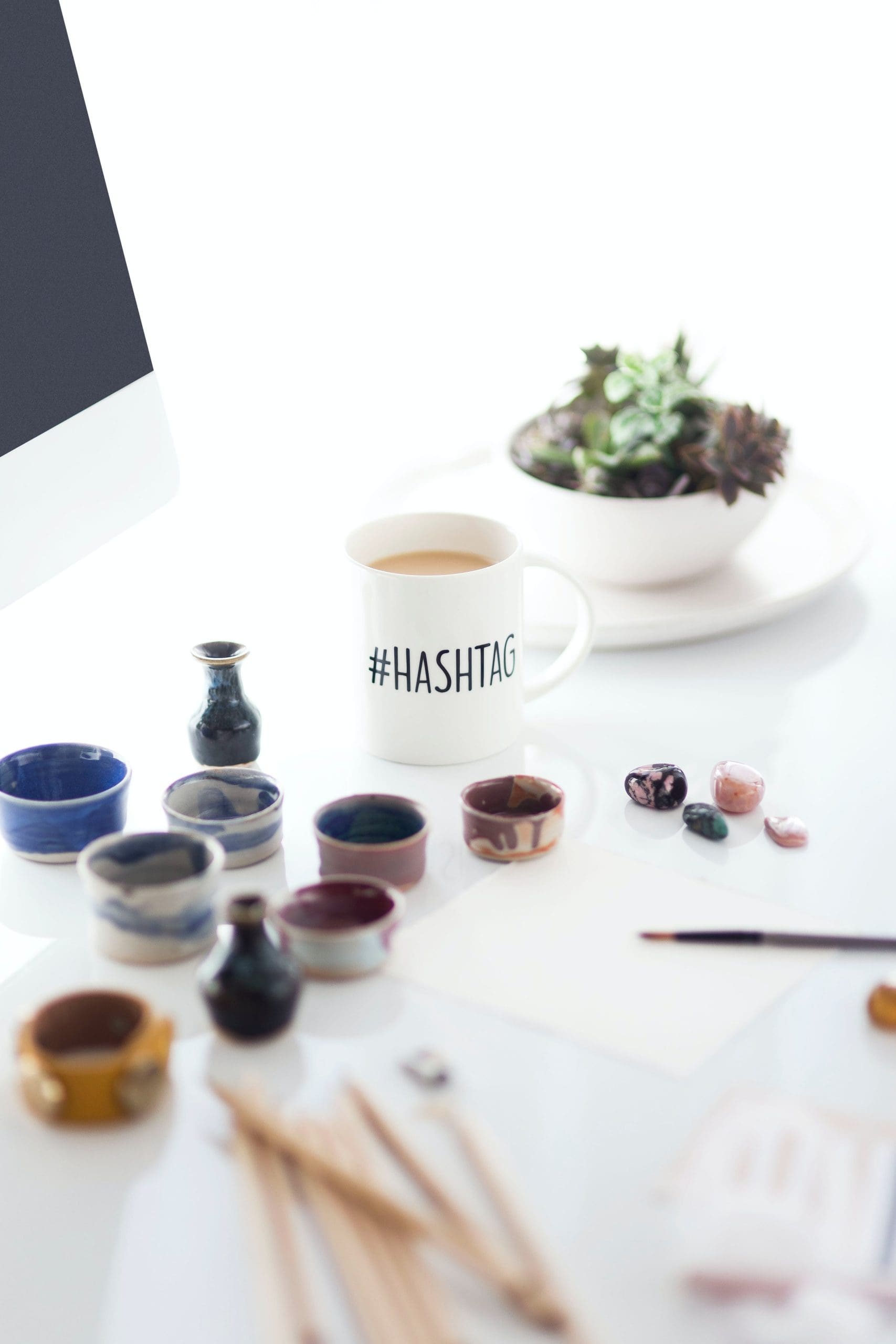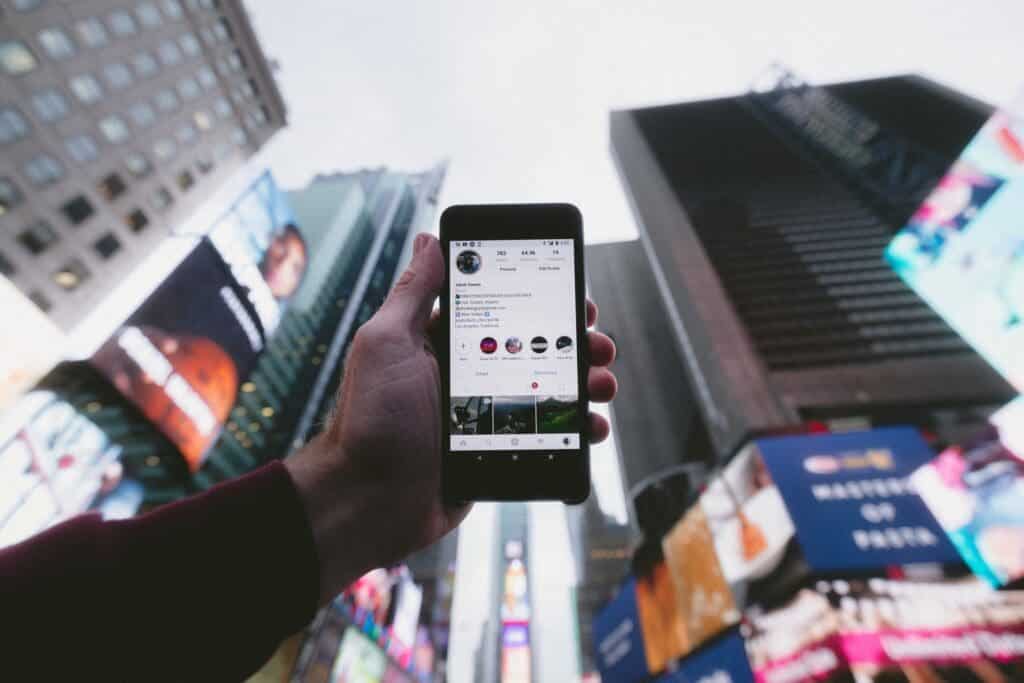
07 Mar What’s the Deal with Instagram Hashtags?
An Instagram Hashtag Explainer

Photo courtesy of Katie Harp vis Unsplash.
Social media is an intersection of art and science, and nowhere is this more apparent than the ever-shifting, mysterious world of hashtags. For every moment of Jimmy Fallon and Justin Timberlake #bestfriendgoals, there is a cold and unfeeling algorithm ruthlessly deciding the fate of every small business and influencer on Instagram.
To make things even more complicated, Meta’s algorithm for Instagram and Facebook is constantly changing. It can feel like a Sisyphisean task to keep up with the seemingly constant changes. However, hashtags are important for growth and they can be a powerful tool when employed precisely.
What Hashtags Should I Use?
Picking the right hashtag set is even more important than selecting the perfect Drake lyrics for your caption. Instagram and Twitter have notoriously poor search functions and the only way to make sure you don’t get lost in an avalanche of posts is to use hashtags effectively.
Start by using a variety of hashtags. We like to put them into a couple of categories: branded, category, community, descriptive, industry and location.
Branded: these hashtags include your business name or any campaigns/slogans you’re running. (i.e. #Apple, #ShotoniPhone)
Industry: relatively straightforward, you’ll want to include this to make sure people in your audience can find you easily (i.e. #travel, #foodstagram, #realestate)
Category: use this to differentiate your own content. A photographer might use #onfilm or #digital to describe a particular image.
Community: community hashtags will likely require the most research as every community is different. An example for a number of our clients based in Northeast Florida is #edibleneflorida, which restaurants and food critics in and around Jacksonville use.
Descriptive: this is another way to give context for your posts while attracting a similar audience. #WeekendVibes or #Birthday are generic on their own, but help round out a full picture alongside other hashtags.
Location: use your neighborhood, city, or state—depending on the size (i.e. #Anastasia, #StAugustine, #Florida)
While selecting your hashtags according to these categories, you’ll want to keep in mind their density.
Hashtags are split up into Low-, Medium, and High-Density. Low-Density have been used less than 50,000 times. Medium-Density have been used between 50,000 and 500,000 times. High-Density have been used between 500,000-1,000,000 times. Any hashtag above 1,000,000 is not worth using for search purposes; there’s simply too many other posts to break through unless you are Kylie Jenner (and you don’t need to use hashtags if you’re Kylie Jenner).
You’ll want a good mix of Low- and Medium- hashtags with only one or two High-Density hashtags thrown in for flavor.
You might have heard of certain hashtags or accounts that have been “Shadowbanned”. It sounds a lot more dramatic than it actually is. There are so many posts with #SundayFunday, for example, that Instagram doesn’t even bother to promote them—it would flood their own algorithm.
Whatever hashtags you choose, make sure to have a few sets that you can cycle through and mix up. If you use the same hashtags every day you’ll just be in front of the same people who either already follow you or have already made a decision not to engage with your content.

Photo courtesy of Jakob Owens via Unsplash.
How Many Hashtags Should I Use?
You are allowed to use up to 30 hashtags per Instagram post (and 10 per Instagram story). Over on Twitter, you can use as many as you like (within the 280 character limit).
So how many should you use before it becomes too many? Instagram says you should use no more than five. They also said you should use between 8-15. Confusing? You bet. Official Instagram accounts gave out both of those guidelines at different points in 2021.
It is really more about the quality than the quantity. If you stick to one or two hashtags per the categories from the previous section (branded, industry, category, community, descriptive, location), you’ll be in good shape.
Where Should I Use Hashtags?
If there is one debate that has been tossed around in every Slack chat it’s this: should you put the hashtags in the caption or in the comment?
The proponents of “First Comment” have several supporting arguments.
One, it’s cleaner. When people are scrolling through the Explore tab on Instagram they are looking for one thing: authenticity. There isn’t much that raises suspicions like an abundance of hashtags right below a picture.
Two, it generates engagement. As soon as the post is made, it already has one comment. People are more likely to tap though and possibly leave a comment of their own.
Finally, social scheduling platforms make it easy. Whether you’re using Buffer, Social Pilot, Later or another scheduling platform, these third party softwares give you the offer to write a “First Comment.”

Photo courtesy of Jodie Cook via Unsplash.
On the other end of the spectrum are the digital marketing professionals who will fight tooth and nail that hashtags should be in the caption.
Ironically, the arguments for “Caption” are similar to the “First Comment” debate points. When it comes to authenticity, most people on Instagram are aware you’re using hashtags—so don’t bother hiding them. Pick a smaller, select set of trending and local hashtags that show you are carefully thinking about your posts, your brand and, most importantly, your audience.
High-volume hashtags (#design, #love, etc.) are useless unless posted in the caption, because even waiting 15 seconds to post it in the comments section can bury your post with a flurry of even newer posts under that hashtag. Feel free to go back later and add niche hashtags in the comments section, if you really want to.
Perhaps putting a button on this debate forever is Instagram, itself. In 2021, Instagram announced through their Creators platform that for the best results, you should be putting your hashtags and relevant keywords in your caption.
Communicate Your Message In Style
Meerkat Media Group has a vast range of experience with everything from daily content creation to complete brand marketing. If you’re looking for guidance on how to effectively convey your message, we’re here to help. Contact us today to learn how to take your digital marketing to the next level!



